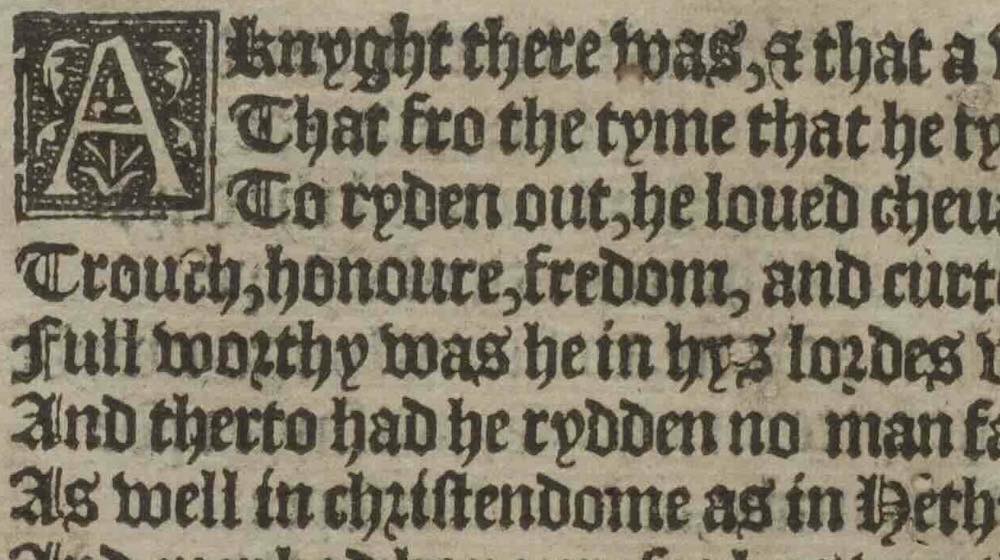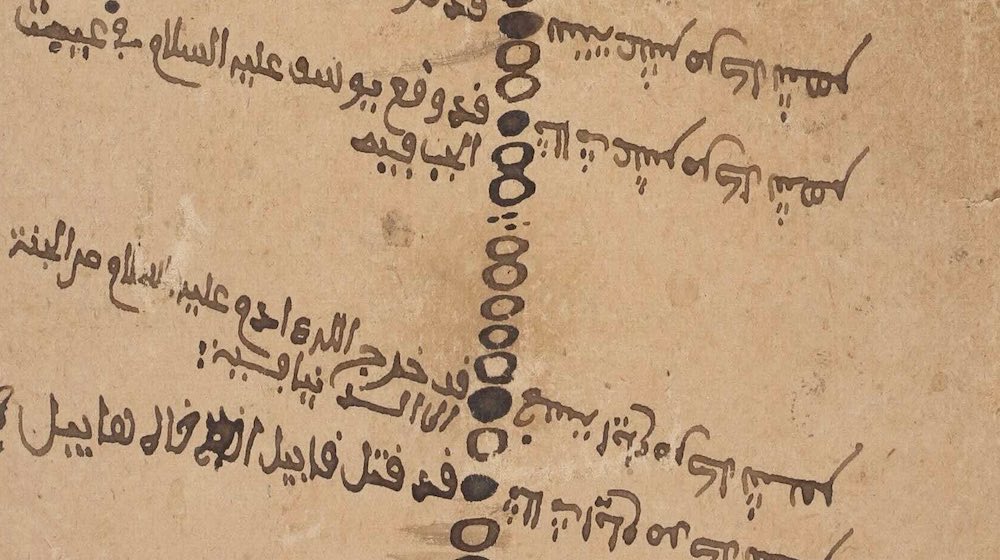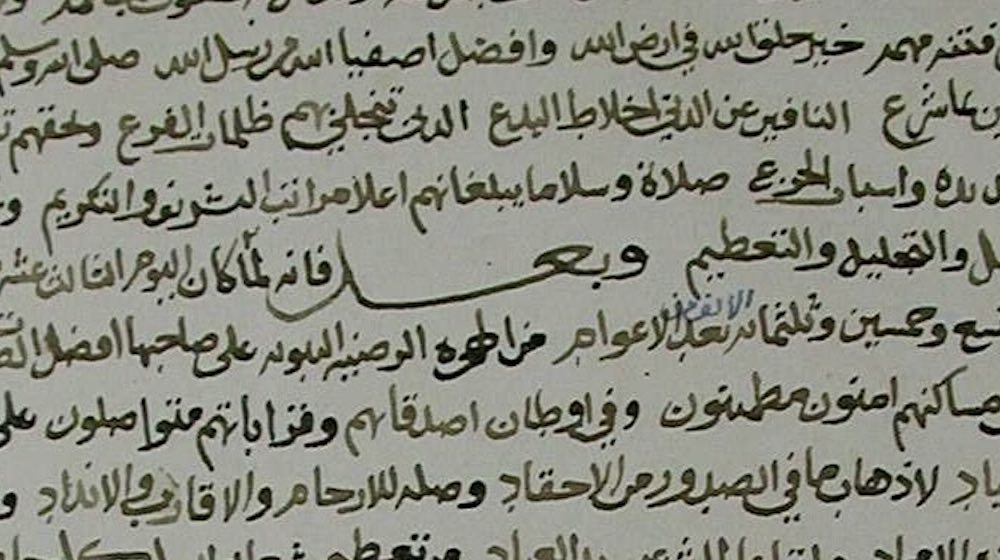Metaphorical Meteorology, Or: When A Sunny Day Offers More Than Sunshine
May 9, 2024
Metaphorical Meteorology, or: When a Sunny Day Offers More Than Sunshine
This story is part of an ongoing series of editorials in which HMML curators and catalogers examine how specific themes appear across HMML’s digital collections. On the theme of Weather, Dr. Matthew Z. Heintzelman has this story from Special Collections.
In describing printed books, a cataloger looks for subjects or areas of study where that book would fit appropriately with other books on the same topics. If, for example, a book is about microbiology, it would receive a “classification” that places it on the shelf alongside other microbiology books—and also, perhaps, books on microbial ecology and microbiomes—so that a reader could find supporting and related resources.
One book for which I have never found an entirely satisfying classification is by an Austrian Jesuit priest and professor, Franciscus Reinzer (1661–1708). In 1697/1698, Reinzer published his Meteorologia philosophico-politica, a collection of 12 Latin “dissertations” on meteorological phenomena, with special reference to their spiritual, moral, and political applications.
Saint John’s University in Collegeville, Minnesota, holds a copy of the second edition of this work, published in Augsburg in 1709, a year after the author’s death (SJRB 00636). The copy at Saint John’s came as a gift in the 1870s from the Abbey of Ottobeuren, which had—according to a note on the title page—purchased the book in 1710. The text would be printed only one more time, as a German translation published in 1712.
Meteorologia philosophico-politica (Philosophical-political Meteorology) is a kind of “emblem book”—a collection of symbolic and allegorical engravings, each graced with a caption and explanatory text. Reinzer’s text contains 83 such emblems as well as a full-page illustration for the frontispiece, which depicts weather-related phenomena.

Much like the overture for an opera, the frontispiece picks up on themes and motives from throughout the book and packs them into a single visual mash-up—from the warm glow of sunshine to the devastation of lightning, the inundation of excessive rain to the fiery working of metals in an underground cavern. Watching over this world of weather is a portrait of Holy Roman Emperor Joseph I (1678–1711), to whom the book is dedicated.
Reinzer’s 12 dissertations on meteorology each contain a series of questions paired with a political conclusion and a matching engraved emblem. Marginal citations provide scholarly support for the author’s arguments. The emblems serve as a visual synopsis of the philosophical or political teaching that Reinzer wishes to impart.
It would be impossible to discuss all 83 emblems in this brief introduction. So, here is a sampling of their meteorological metaphor.
Gallery of Emblems
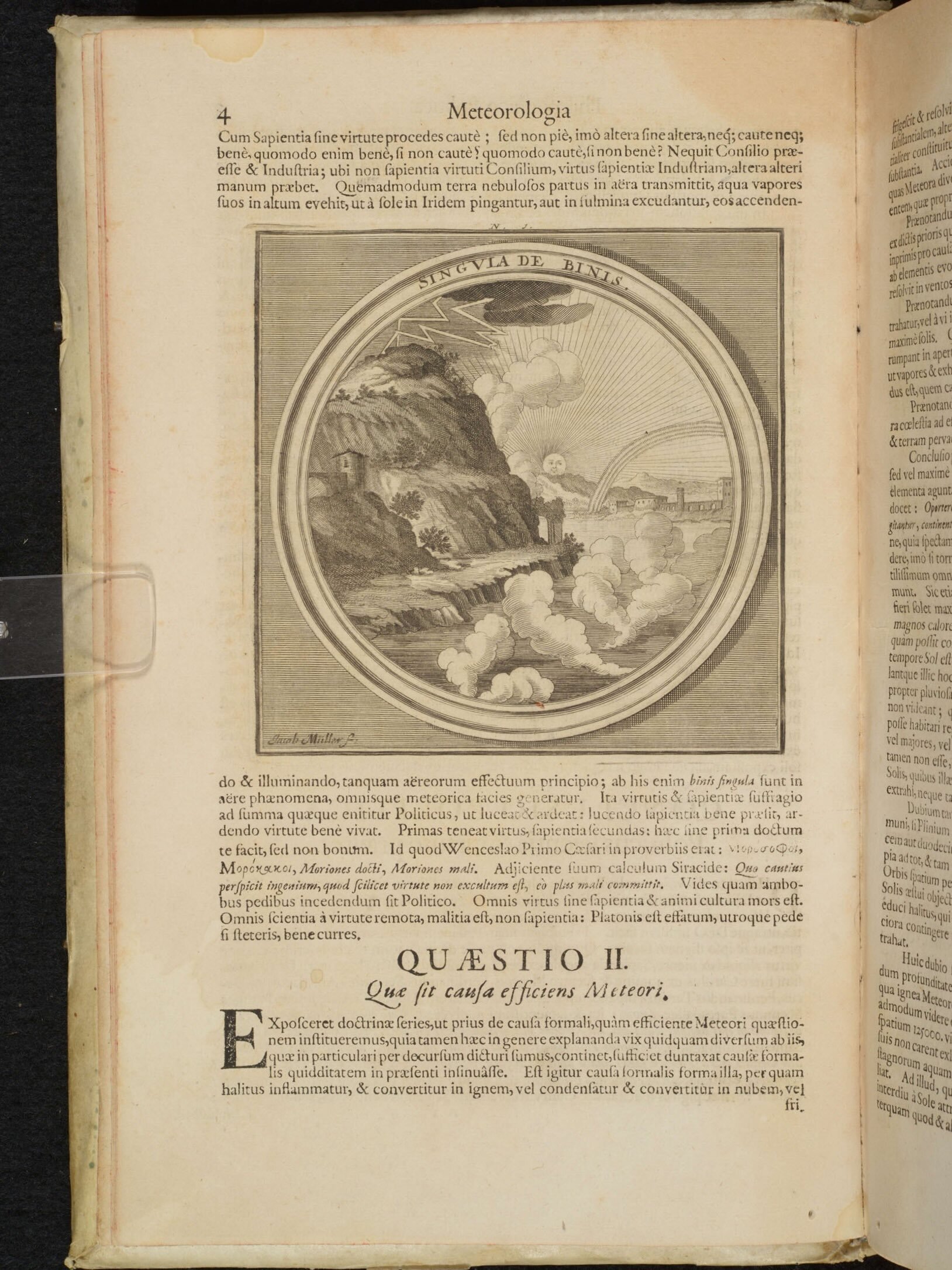
The first dissertation describes meteorological bodies in general (De Corpore Meteorico generatim), and the first question offers an explanation that such bodies are formed out of the blending of two elements (i.e., water, earth, fire, or air). Reinzer goes on to state that, similarly, a good political leader should possess a mixture of knowledge and virtue. In the emblem we see a gently smiling sun looking over steam vapors, a rainbow, and lightning.
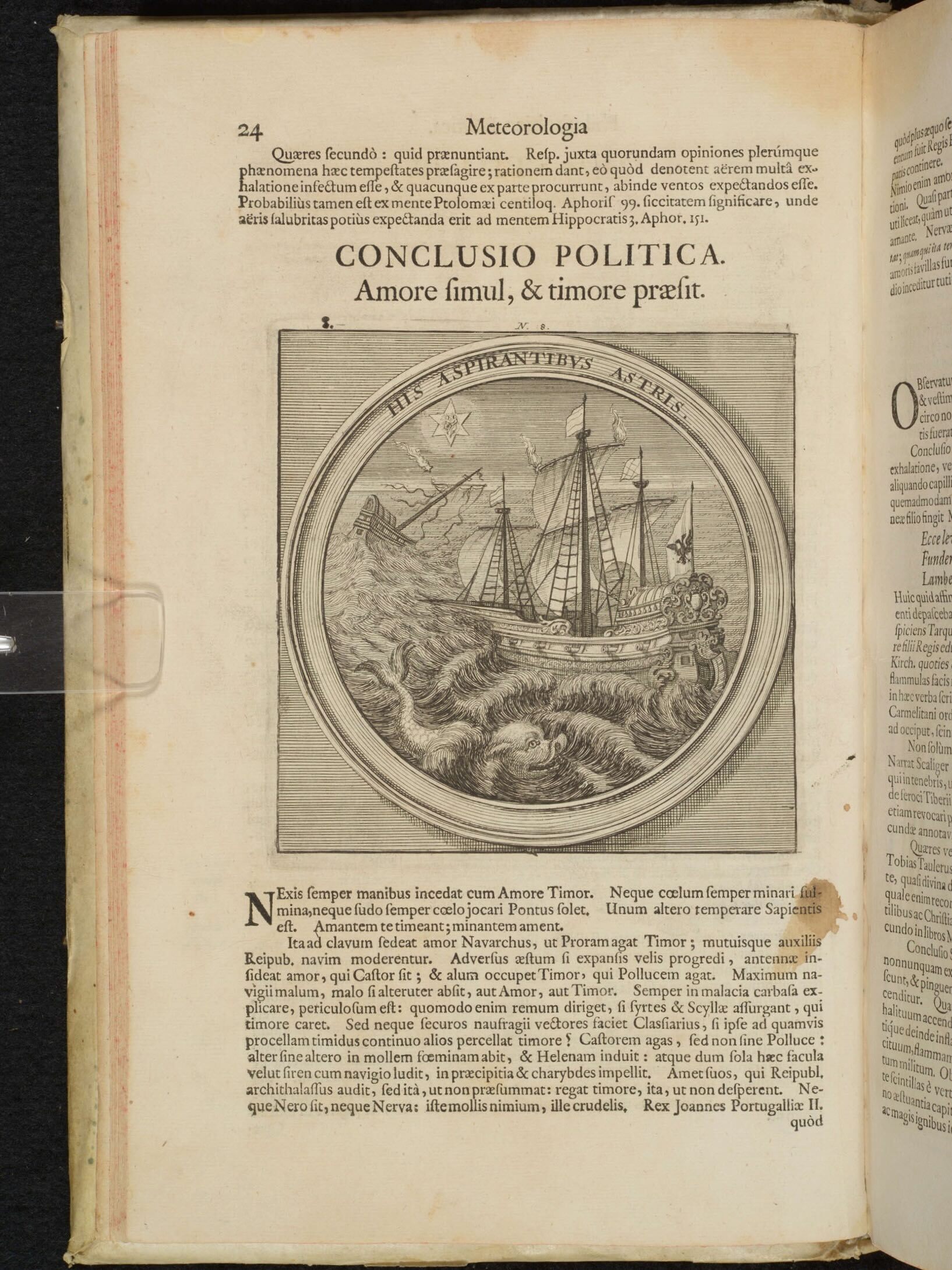
In question three of the second dissertation (on fiery meteorological bodies), Reinzer discusses various kinds of stars (“running,” “flying,” and “falling”) and the mythological figures of Castor, Pollux, and Helen of Troy. His conclusion states that a leader must rule with love and fear at the same time (Amore simul & timore praesit). The emblem depicts two ships in stormy waters, one sinking: while love must steer the ship, fear keeps a protective watch over it.
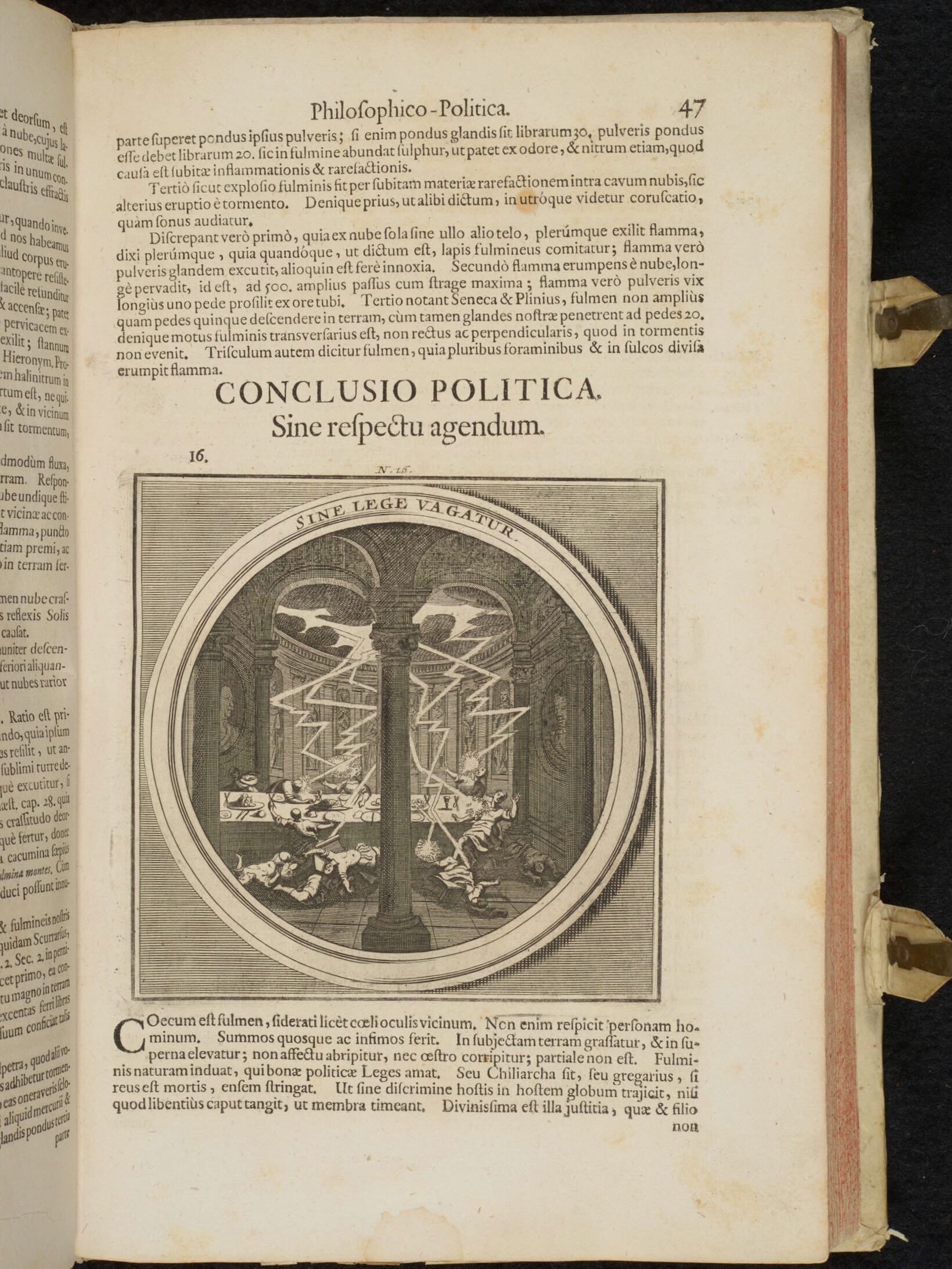
In the 16th emblem (for question five in dissertation three) we see lightning indiscriminately striking people around a banquet table. Likewise, a ruler must treat all equally, without regard to their status or what they do (Sine respectu agendum).
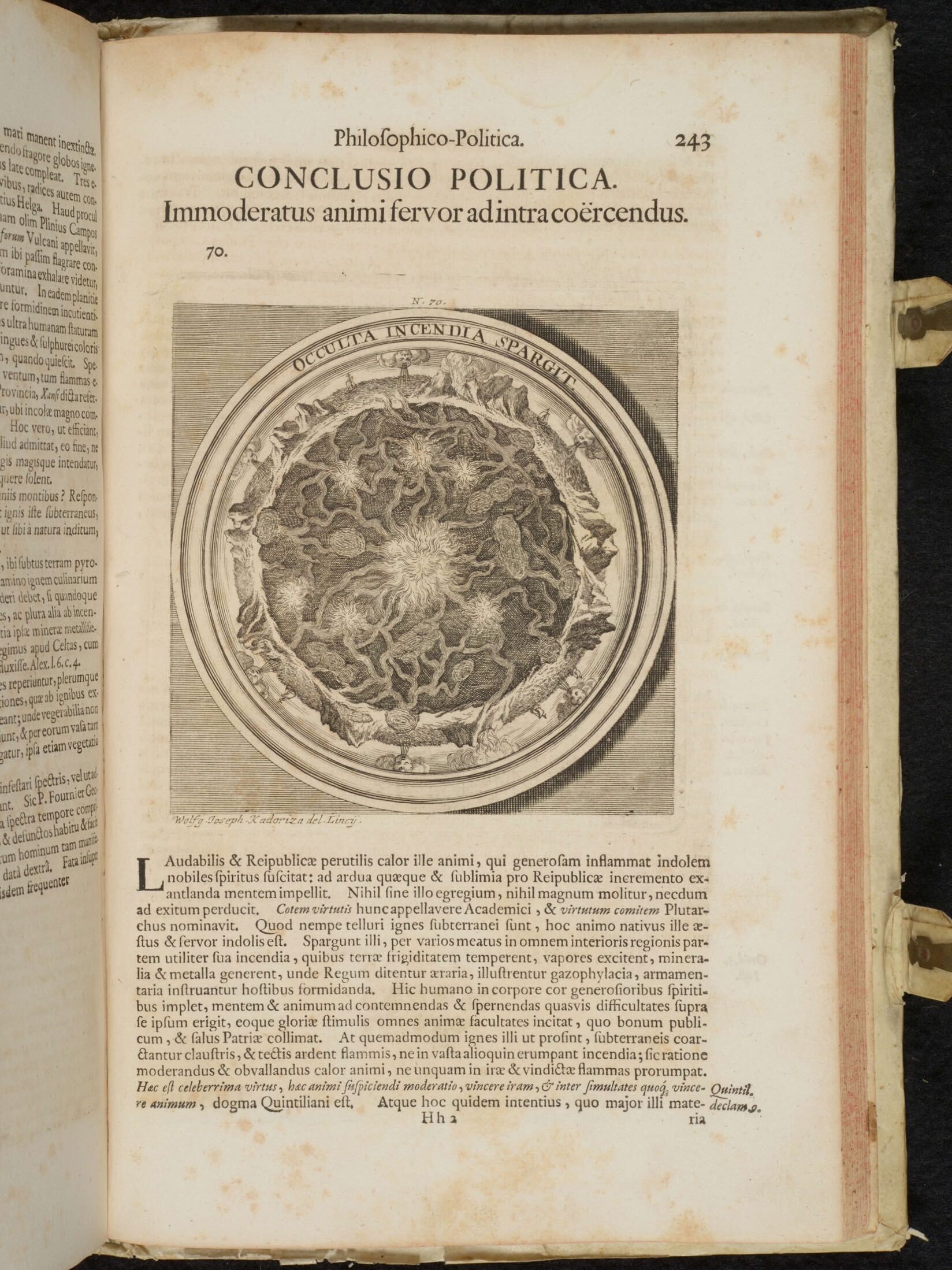
Reinzer dedicates the later dissertations to “meteorological” phenomena in the earth, such as stones and metals. In dissertation 11, he discusses mountains, caves, or cliffs, and subterranean fires. Here we learn that the internal fires of the Earth demonstrate how the “uncontrolled fervor of the soul must be contained and controlled” (Immoderatus animi fervor ad intra coercendus).
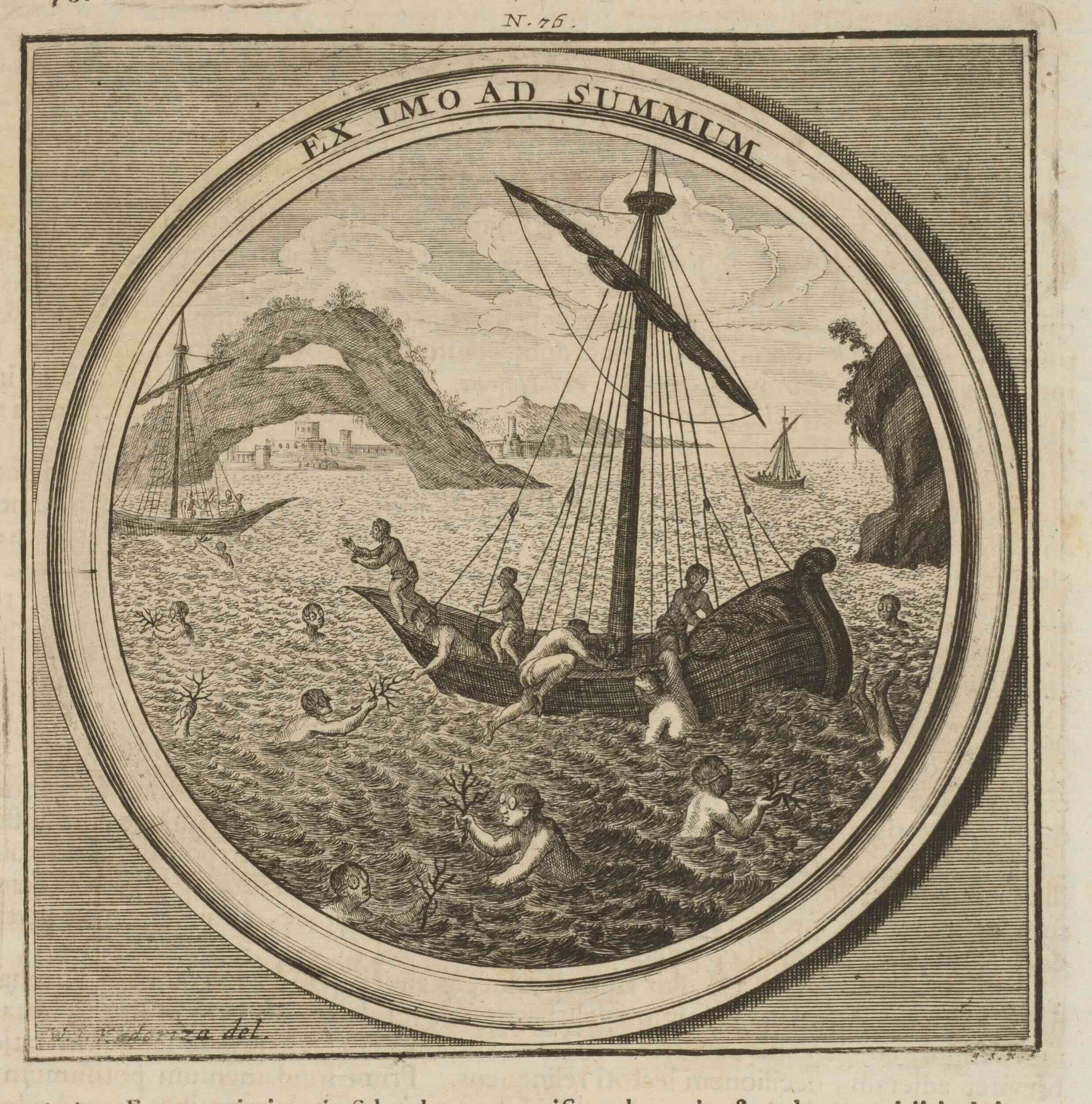
Even a seemingly bucolic image from the final dissertation (number 12), depicting swimmers in the summertime, bears additional meaning. The swimmers are in fact coral divers, who demonstrate that coral—left in the watery depths—remains soft, until it is raised into the air. So, too, virtue becomes firm when it is exposed for all to see.
Conclusions Drawn
So, what kind of book is the Meteorologia philosophico-politica? Is it a scientific text (complete with supporting references in the margins)? Is it a study of Aristotelian philosophy on meteorology? Is it a moralizing theological tract? Is it a political work? Do the emblems make it book of visual arts? How does the cataloger classify an eclectic work like this?
For now, Reinzer’s book resides in the library at Saint John’s as a scientific work on “meteorology” (in the modern sense of weather or climate studies). And yet, I am still not convinced that is a good fit.
Check out other emblem books in the Saint John’s collections (some containing more weather-related emblems), including an 18th-century commentary on the Rule of Benedict by Bonifacius Gallner, OSB, (SJRB 00625) and a 16th-century collection of heroic devices (AARB 00302).

